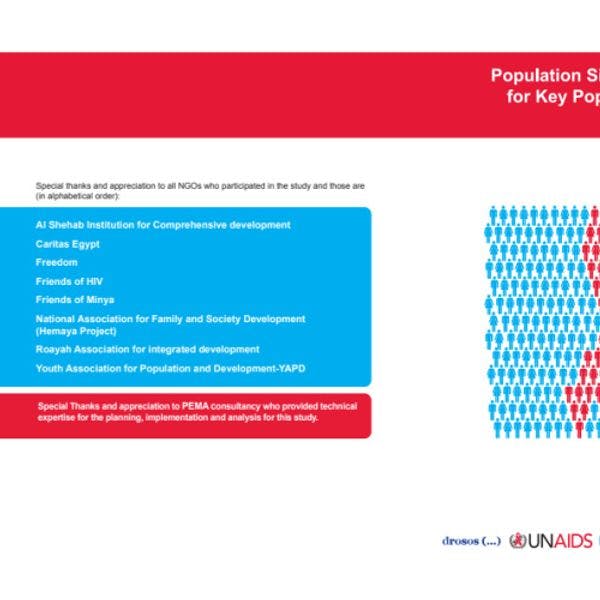Population size estimation study for key populations in Egypt 2014
What is Population size estimation?
Population size estimation is a process and a fundamental technique for gathering the information necessary to plan interventions and prevention programs for key populations (KPs)
Limitations:
1. Certain segments of the MSM and FSW populations are not represented in the estimates.These include:
- MSM and FSW in rural areas for represented regions.
- MSM and FSW in governorates excluded from the study for security reasons (Sinai) or for budget limitations (e.g. New Valley). It is important to note that the governorates excluded from the estimates represent a small portion—2% and 4%—of the total male and female household population, respectively.
- FSW who sell sex exclusively out of private residences or by phone or Internet.
- MSM who do not meet partners either at MSM-identified venues or MSM-specific Internet sites; for example, those who meet partners exclusively through their social circles.
2. PWID estimates were based only on level one geographical mapping as the technical committee and the steering committee decided it would jeopardize the research team's safety.
3. Regarding the PWID estimates, individuals who inject exclusively in private settings (such as at residences) or in closed settings (e.g., prisons, jails, drug treatment centers) are most likely not reflected in the estimates. In addition women who inject drugs (WWIDs) were not included in these estimates.
4. Data to approximate turnover among KPs were not available to expand the national figure beyond the individuals “currently” engaged in the respective risk behaviors (captured by the study)
5. The security situation continues to compromise field work in the HIV field. However, this problem was addressed in data analysis by applying the appropriate adjustments based on field workers feedback and previous program data when available.
Recommendations:
1. Strengthen local NGO’s ability to manage the safety risks of accessing KPs at the street level and other private settings. NGOs can learn from adapting international best practices.
2. Improve understanding of FSW and MSM who use private residences, Internet or phone. This can be achieved by qualitative research and/or rapid assessment.
3. Improve NGOs’ programmatic data so that they can be used to develop multiplier size estimates in conjunction with future surveillance studies
Keep up-to-date with drug policy developments by subscribing to the IDPC Monthly Alert.
